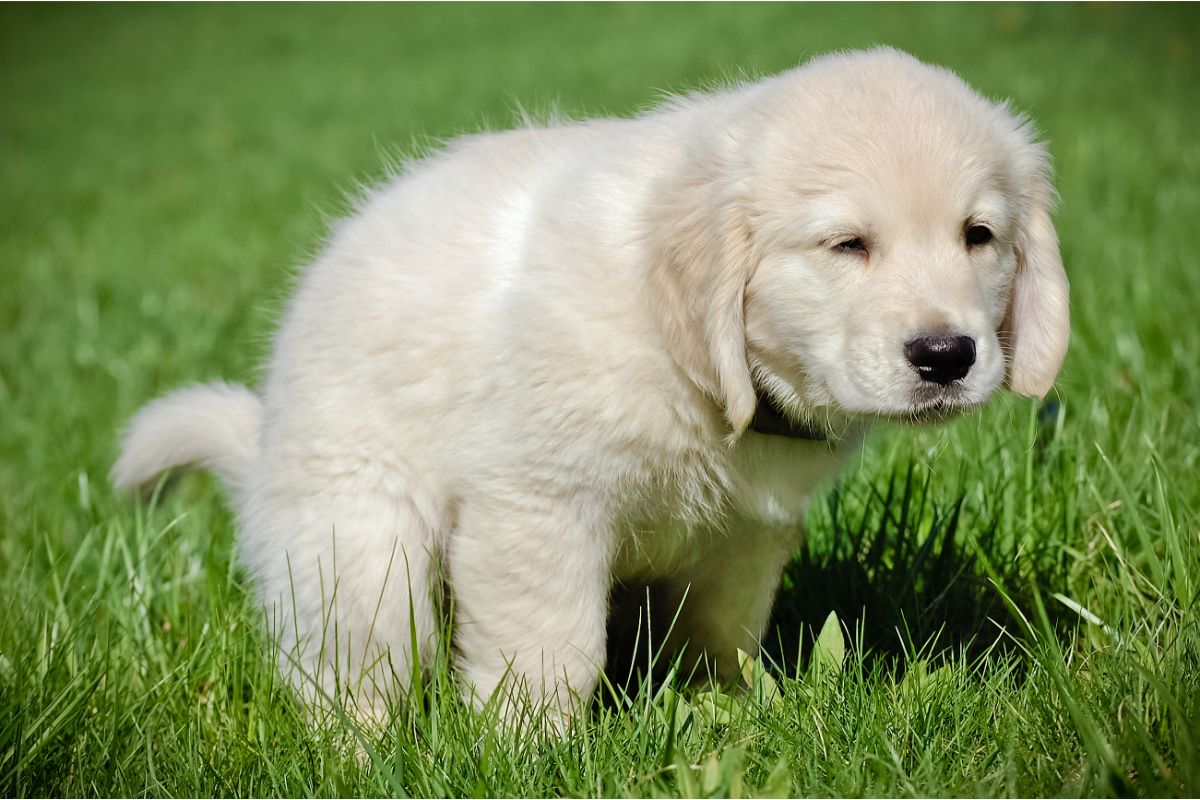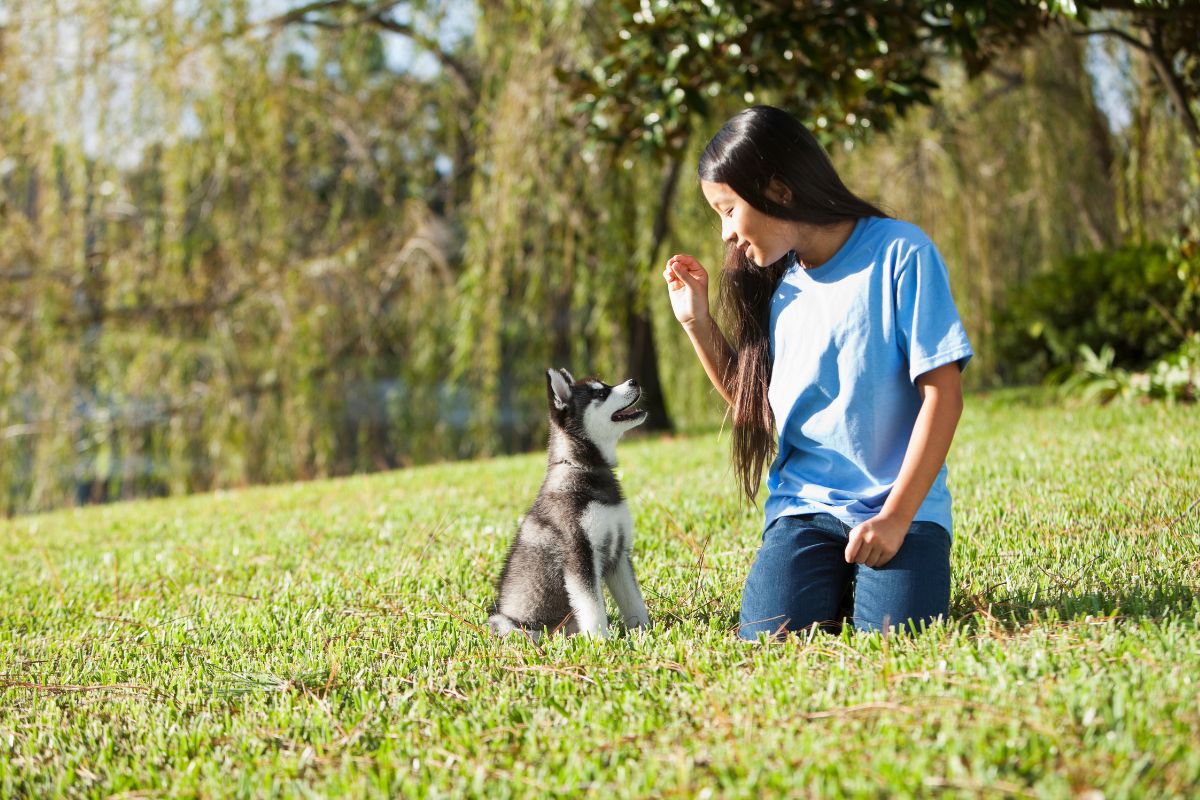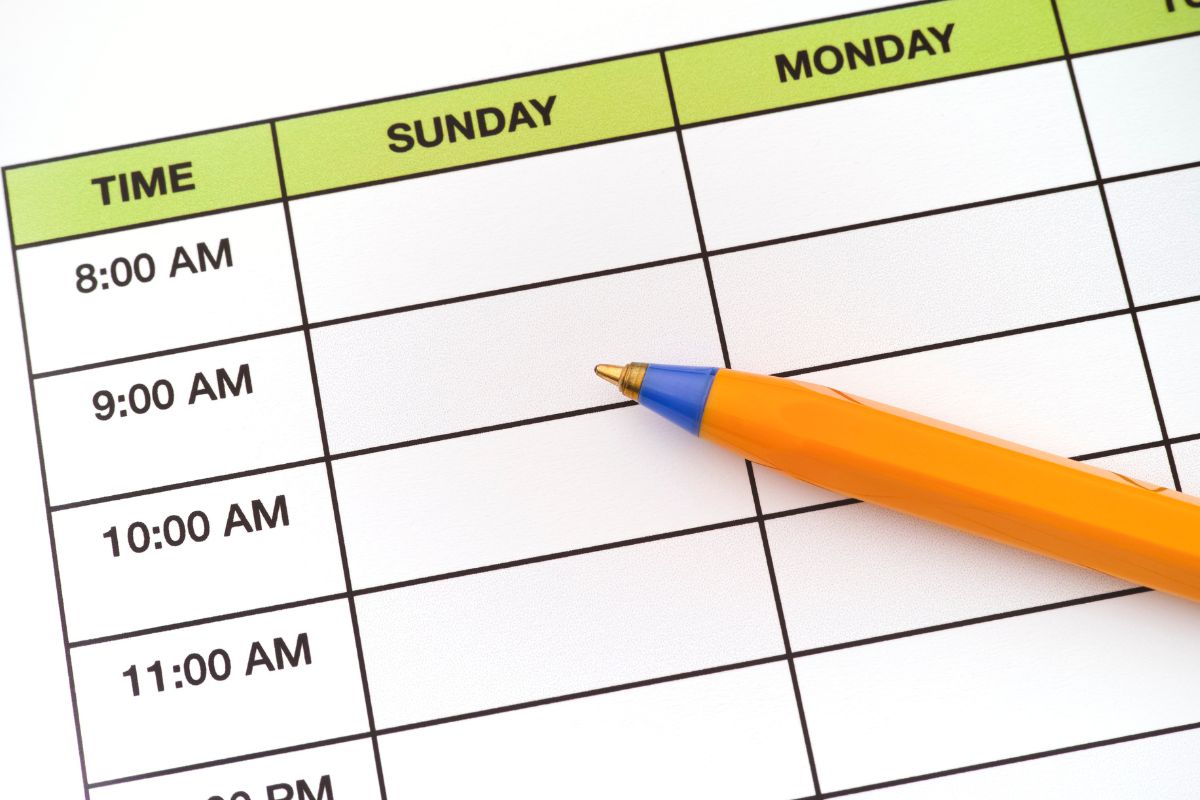To crate train or not to crate train – that is the question!
One of the biggest debates in the dog world is whether crate training is a good idea or not.
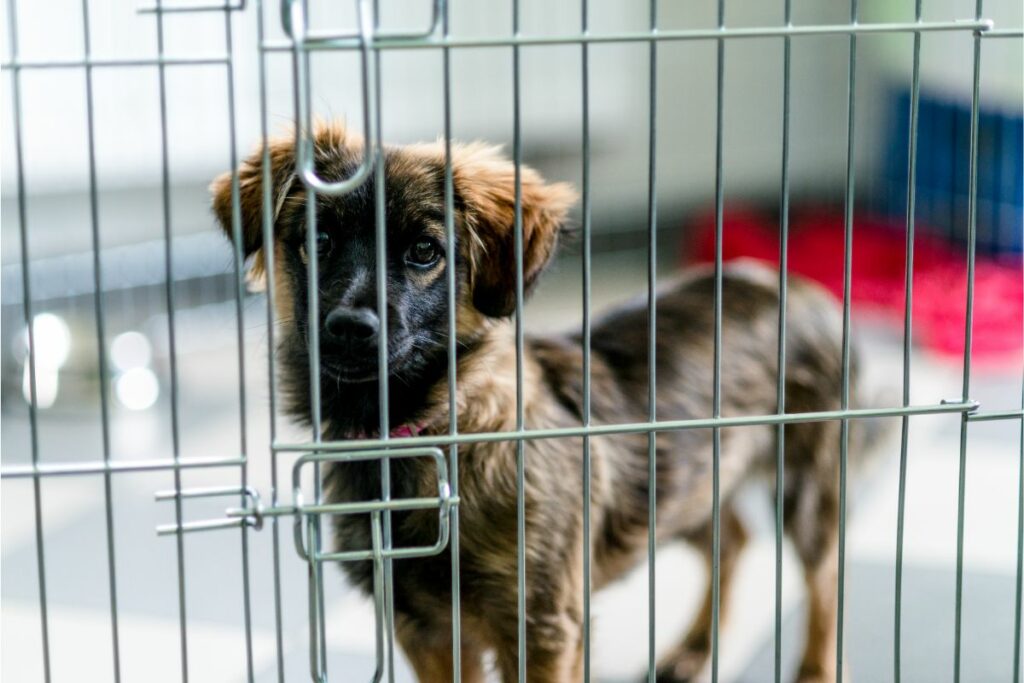
This is a hotly debated topic, with many being conflicted over whether crates are a positive training tool, or whether they can be distressing for dogs.
The truth is that crates can be a valuable tool for training your dog, and can make potty training, sleep training, and traveling so much easier for both you and your puppy.
If you are new to the concept of crate training, then we are here to help you.
In this guide, we will give you all of the information that you need about crate training, how to do it, and why you should. Read on to find out more.
Why You Should Crate Train Your Puppy
Many people believe that crate training is cruel or distressing for your puppy. But, this is not the case. When used correctly, a crate can be the perfect resting spot for your puppy.
Dogs naturally would reside in a quiet, enclosed, comfortable space in the wild that makes them feel safe. This would normally be a den, so the crate replicates this environment.
A crate can also keep your puppy safe when left alone, as your puppy will not be able to go into rooms, get into trouble, or chew on wires and furniture.
If you are unable to supervise your puppy for a few minutes or hours, then a crate keeps them safe and secure during this time.
Puppies are also bundles of energy. They don’t know when to sleep and rest, or when to calm down.
Having ‘crate time’ throughout the day teaches your puppy to nap so that they do not become overtired- which can lead to unwanted behavior such as nipping and biting.
Having a crate can also teach your puppy about boundaries. Your puppy will come to understand that the crate is its safe space.
Having crate time, playtime, toilet breaks, and nap times can help establish a routine for your puppy.
In addition, dogs naturally do not want to mess their sleeping areas up, so having them sleep in a crate at night and when you leave can help them learn to hold in their bladder and bowel movements.
Some breeds are very prone to separation anxiety, which means that they are distressed and anxious when left alone. They grow very attached to people, and cannot cope when left at home alone.
A crate can be a valuable tool for dealing with separation anxiety, as your puppy can be slowly conditioned to be relaxed in a crate, which provides a safe, secluded, and secure environment.
Getting your puppy used to a crate early on is also very useful. For instance, if your dog has surgery further down the line, they will be crated in the veterinarian, and you won’t be there.
You do not want your dog to become stressed because this is their first time in a crate when they need to be resting and recovering.
In the same way, as your dog ages, and needs to rest its legs, they may not understand that they have to rest more often.
Having them crate trained means that you can tell them to go in their crate for a rest, as this can limit injury and pain for dogs with health issues.
Also, if your dog needs to travel, you will need to place them in a carrier or a crate. So, getting them used to one early on can be a great bonus.
Crates provide very safe environments for your puppy, and give them a nice place to rest and calm down when they are overwhelmed, or when they are stressed.
For example, if there are fireworks, thunderstorms, or even loud noises around your home, your puppy can become nervous and display anxiety-based behaviors.
A crate can reduce anxiety in these circumstances.
Finally, crates can help you house train your dog. Puppies need to learn boundaries and how to behave in the home, and they can have more freedom as a privilege for good behavior.
Large open spaces can be overwhelming for puppies at first, so teaching them how to behave and when to go to their crate is incredibly important.
When To Start Crate Training
It is best to start crate training as soon as possible, as when your puppy arrives in your home, you will want to establish a routine quickly.
You want to start as you mean to go on, so the very day that your puppy comes home with you, you will need to introduce them to the crate.
Most puppies are allowed to leave the litter at around 8 weeks old, which is perfect for starting crate training.
However, if you rescue a puppy who is a little bit older, or even if you adopt an adult dog, it is a good idea to start crate training when they come to your home.
This will give them a place to unwind that makes them feel safe, secure, protected, and comfortable.
How Long Does Crate Training Take?
Crate training is an ongoing process, so you will have to introduce it slowly at first and build up your puppy’s confidence inside the crate.
Then, keep it consistent, and keep reinforcing that the crate is a nice, safe place to be in, with positive reinforcement and praise.
How To Crate Train Your Puppy
If you are bringing a puppy into your home, then you will need to be prepared with the basics of how to crate train them. The first step is to choose the correct crate for your puppy.
Choose The Right Crate
To begin, you have to pick the right crate for your puppy. This includes having the right size, material, and style for your puppy.
To find the right size crate, you will want to ensure that your puppy is able to stand, sit, turn around, and lie down comfortably in their crate.
If you have not crate-trained a puppy before, then you may be unsure as to whether it is ‘kind’ or not.
Let us put you at ease – as we mentioned higher up, dogs would live in dens in the wild, which are small, covered shelters that can make them feel safe.
While you may want to give your puppy the freedom to roam the house, this can lead to negative behaviors such as anxiety.
A smaller space can also ensure that your puppy is less likely to soil their crate as they instinctively would not do this inside of their dens.
So, crating your puppy from a young age can also help potty train them, as long as you give them plenty of potty breaks and opportunities to go potty.
Now, some owners will say that it is best to purchase a smaller crate at first for your puppy and upgrade to a larger crate when the puppy grows.
However, other owners will simply purchase a crate that is the right size for the breed when they are fully grown, as you won’t have to change it.
There are three main types of crates to choose from; metal wire, fabric crates, and plastic crates.
Plastic crates are great because they block out stimuli and can help your puppy settle in an enclosed environment. Plastic crates are also great for traveling.
Alternatively, you can choose fabric crates as these are easy to store, are portable, and foldable, and you can take them anywhere with you.
However, they are not durable, as your puppy could chew through it. So, if you have a puppy that could have separation problems or destructive behavior, avoid fabric ones.
Our favorite option is a metal wire crate. These allow airflow and your puppy can see out of the crate.
In addition, metal wire crates may come with dividers, so you can make the crate smaller for when your puppy is small, and larger when your puppy has grown.
Metal wire crates can also be covered with a crate cover that has flaps for the doors and a window for airflow.
The cover can ensure your puppy can settle and sleep without feeling exposed or getting distracted, and the small windows can let air in and keep them cool.
The gaps in the wires can also be great for more anxious or nervous puppies at first, as they can easily see where you are and feel more comforted by this.
Be sure to purchase a crate and have it ready for when your puppy arrives.
Introduce The Crate
When your puppy has arrived in your home, and has had a good look around the house, you can introduce them to the crate.
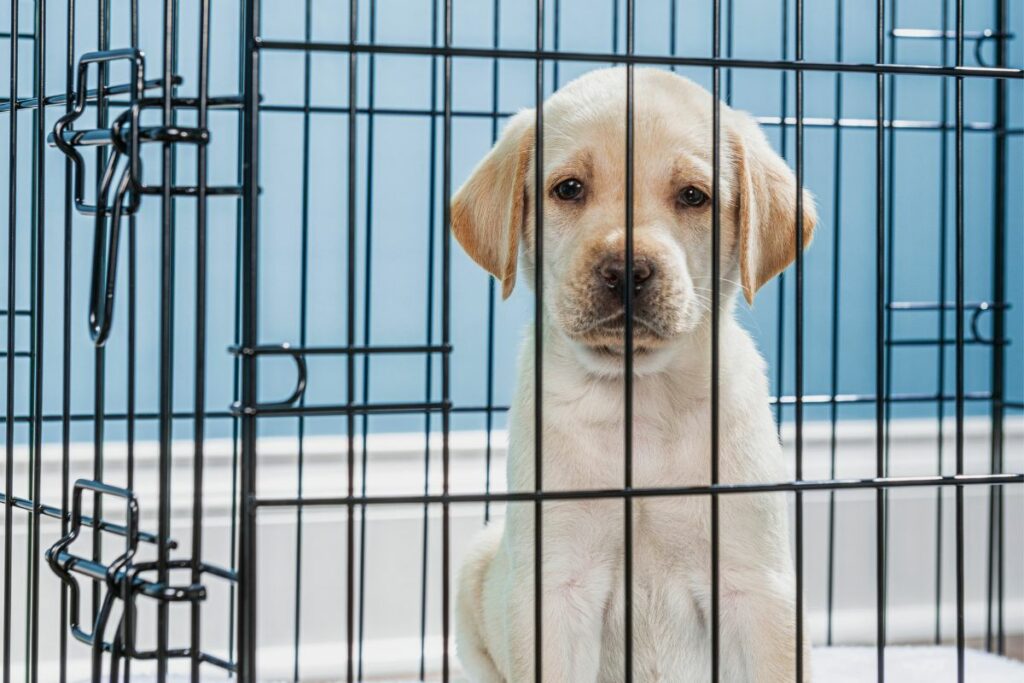
At first, you will want to create a positive connection between the puppy and the crate.
You can do this by encouraging them to go into the crate and rewarding them with treats. You can throw some kibbles or treats into the crate, and encourage them to go inside.
As your puppy goes into the crate, say your command such as ‘Crate’ or ‘House’, so that they start to associate that command with going into the crate.
When your puppy responds and goes into the crate, provide lots of praise and positive reinforcement, then release them from the crate by saying ‘Yes’ or ‘Come’.
You can continue to do this over and over, showing them that the crate is like a fun game for them, and it is a good thing!
Positive Reinforcement
Whenever your puppy does something that you want, you should be praising them, and giving them treats or food as a reward.
This can build a positive relationship between your dog and the crate.
Encourage Going Into The Crate & Closing The Door
Now, once you have established that the crate is a good thing, by placing food, treats, toys and soft furnishings inside of the crate, you can encourage your puppy to go in there more often.
Encourage your puppy to go into the crate with some food, and say ‘Crate’.
When they go inside, reward them, and then try closing the crate door. Wait a few seconds, and open it again, and release and reward.
Do this multiple times in a row in short, quick sessions to get your puppy accustomed to being inside of the crate with the door closed.
Extend The Period Of Time In The Crate
As your puppy becomes more comfortable in the crate, try extending the period of time in the crate.
This should begin with only short intervals, as puppies may not take to it at first, and they need regular toilet breaks.
Again, encourage your puppy to go into the crate, reward them, and close the door. Then, step away from the crate and leave them in there for a few minutes.
If you have a rescue puppy with anxiety problems, then you may only be able to start with 2-3 minutes in the crate, and you will have to slowly build up their confidence over time.
If your puppy seems to settle, then try leaving them for 15 minutes, building up to 30 minutes and an hour in the crate. Then, release them, reward them, and praise them.
Try Leaving The Room
Some puppies can settle in the crate well when you are in the room, but not so much when you leave the room.
So, you may have to try placing them in the crate and exposing them to being left alone slowly.
To do this, do the same as you always do- get them to go into the crate, close them in, and reward them.
Then, go out of the room for a few minutes, depending on your puppy’s confidence level.
If they become stressed, then try only leaving for 5 minutes, and build up the period of time slowly until they are comfortable being alone in the crate without anxious behavior.
Final Thoughts
To summarize, crate training can be a valuable training tool, as long as it is not used as a punishment.
The crate should not be used for time outs to lock a dog away due to misbehavior if the dog is not comfortable or accustomed to the crate.
The key to crate training is to keep it consistent. Puppies and dogs need a routine and consistency to feel safe. Your puppy may cry or whine, which is normal.
You need to stick to the plan, and only leave them out after your intended time period, no matter how much they protest.
You may also find that the first few nights in the crate, your puppy may cry a lot.
You should only be getting them out of the crate at night for toilet breaks, and then placing them back in the crate.
If you give in, and let them sleep with you the first night, that line has already been crossed, and it will be difficult for you to establish those boundaries again!
So, try to be patient, and remember that crate training is an ongoing process!
A crate is just one of the items you’ll need to purchase for your new pup – check out our full list of essentials here.
- How To Teach Your Puppy Their Name Easily! - July 18, 2023
- Is Your Puppy Counter Surfing? Find Out How To Stop It! - July 18, 2023
- How To Train Your Puppy For Car Rides: Everything You Need To Know - July 18, 2023



